The Ukraine bike, produced by the V. I. Petrovsky Kharkov Bicycle Plant, was very popular in the USSR in the second half of the last century. People enjoyed this reliable model with pleasure and used it for a long time. The bicycles "Ukraine" were especially popular among residents of the countryside who went to them by mail, to the store, to work and to the forest for mushrooms.

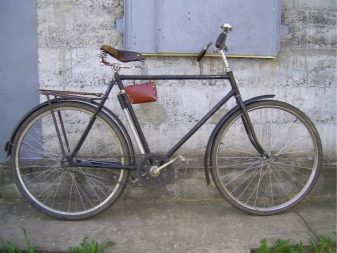
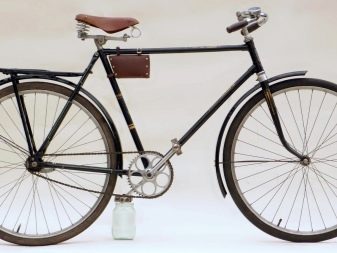
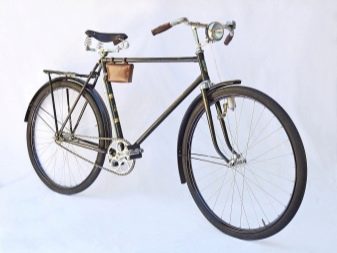
A bit of history
Kharkov Bicycle Plant (HVZ) began its activities in the early 20s of the XX century, releasing a huge number of bicycles in its entire history. The company was engaged in the production of road, sports and tourist models, which gained great popularity not only among the general population, but also among athletes. A milestone in the history of bicycle production was the Olympics-80 held in the USSR, on the threshold of which the plant received a large order for the production of track and highway models Champion Highway and Record.
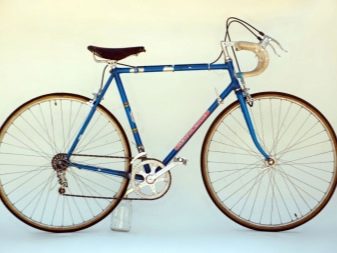
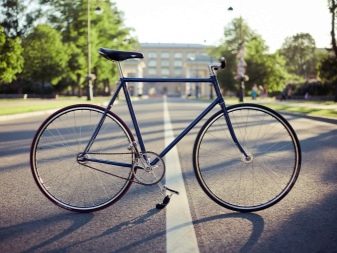
In the whole history of its existence the plant has released more than 30 models of adults and children’s bicycles, among which were both exclusive samples, the release of which was limited to two or three copies, and mass models, such as “Tourist”, “Start-highway”, “Sputnik” and, of course, “Ukraine”.
Kharkov Bicycle Plant still exists today, producing modern models, better known under the brand name "Vodan". The company's products, as in the old days, are characterized by high reliability and durability.

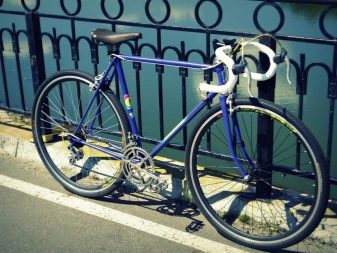
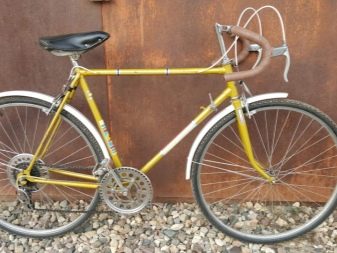
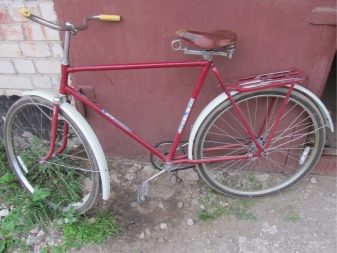
The first men's bicycle, Ukraine, rolled off the assembly line in 1926 and was equipped with a steel frame and 26-inch wheels. ” In this form, it was produced before the start of World War II, after which production was suspended.At the end of the Second World War, the company again began to produce bicycles and presented the public a model "Ukraine" B-120that replaced the legendary "Progress" B-110, created, in turn, on the basis of the German model of pre-war times.
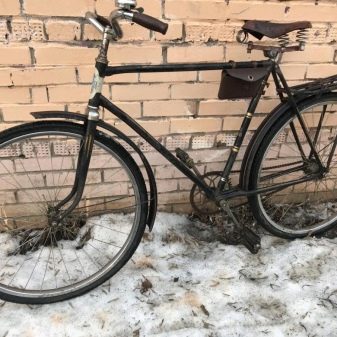

Advantages and disadvantages
Road bicycles "Ukraine" were very popular not only in the Soviet Union, but also were delivered to 28 countries of the world. The high demand for Soviet models was due to a number of important advantages that distinguished them from bicycles of other manufacturers.
- The strong and reliable design made it possible to operate the bike in difficult conditions without the risk of deformation of the frame and damage to the main components.
- "Ukraine" was one of the most durable bicycles and has reliably served its owners for several decades. Moreover, the models that have survived to this day are still on the go, and the only thing their owners complain about is metal corrosion and the need to replace the saddle, which has become unusable from time to time.
- The high carrying capacity of Kharkov models allowed the transportation of adult passengers on the trunk and the transportation of heavy loads.
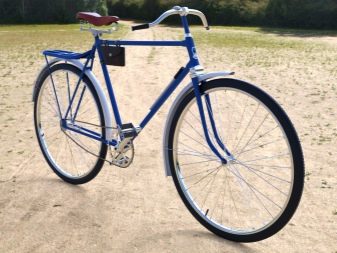
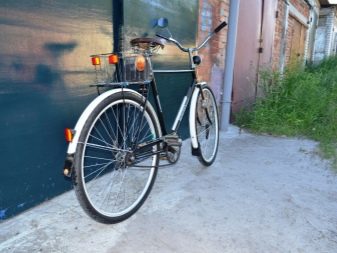
However, in addition to the advantages, Ukraine also had its drawbacks, the main of which are called heavy weight exceeding 17 kg. This made it difficult to travel over rough terrain and sand and made long walks impossible. In addition, the system of gear shifting at "Ukraine" was absent, which, combined with a large weight, made management even more difficult. The next major minus was shortage of spare parts, which it was not possible to get.
People went to Sporting Goods for years in the hope of accidentally finding cameras, tires, connecting rod wedges, or brake drums on sale. There was also a minor marriage, which often consisted in a skewed thread of various compounds.
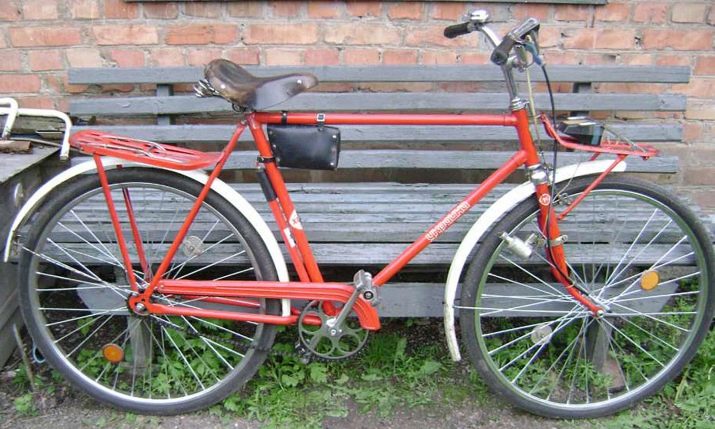
Models and their specifications
Kharkiv Bicycle Plant released several Ukraine models, the detailed characteristics of which are discussed below.
The first modification of "Ukraine" was the male model V-120, which was produced in 1961-1968. It was distinguished by an elongated frame, strong forks and reinforced racks. The latter had bolt fastening, which favorably differed from structures with a welded joint. The front wheel hub had a one-piece design, ensuring ball concentricity. Moreover, the B-120 model was equipped with an additional hand-held tick-type brake acting on the rim of the rear wheel.
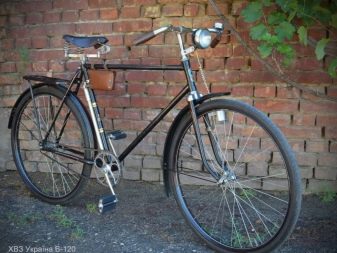
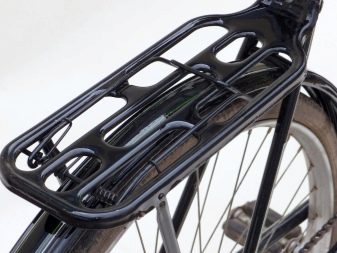
Particular attention should be paid to the saddle. It had an additional front spring and a wide frame, which provided good cushioning and increased bike usability. The trunk also had a reinforced structure, which was provided with an all-metal, without the use of welding, body and sturdy racks. The clip had a spring design and very reliably fixed the load located on it. The rear wheel could be fixed in position, while adjusting the chain tension. Tool bags had a convenient lock and were made in a modern design at that time. A beautiful pattern was applied to the frame and front fork, significantly improving the appearance of the bike.
The base of the bike was 1175 mm, the distance from the carriage to the top of the seatpost reached 580 mm, and the diameter of the wheels was 622 mm, which corresponds to 28 inches. Due to the large size, it was mainly men who used the bike, while women and children were problematic to drive. The width of the tires reached 4 cm, the number of teeth on the front star was 48 pieces, on the back - 19. The weight of the B-120 was 16.5 kg.
The model was additionally equipped with a pump, circuit protection, a headlight and a mini dynamo. Most of the models were painted black, although there were blue and even green samples. Knitting needles were often stained to match the frame, so wheels with chrome spokes were rarely found.

The Bicycle “Ukraine” B-130 was released in 1966.and became the 10 millionth model produced by the plant (in 1979, the 20 millionth was produced, and by 1991 the 30 millionth). Compared to the previous model, it had deeper wings, pedals began to be cast from aluminum alloys, a folding step and a trunk appeared over the front wheel. The rims were made of steel and had a U-shaped profile. On the front rim there were 36 spokes against 32 from the previous model, which significantly increased its load capacity.
A few years later the world saw more the perfect version of the bike V-130 - V-130K, who appeared steering wheel relative to the steering column and changed the configuration of the steering wheel. The frame of the updated model was decorated with the inscription "Ukraine" and a small, pretty pattern. Release was carried out until 1976.
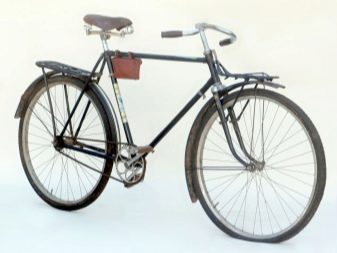
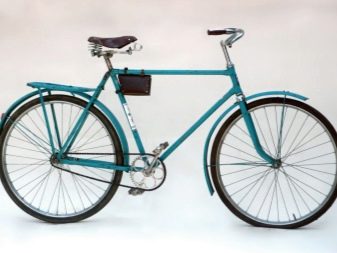
Bicycle "Ukraine" V-134 produced from 1968 to 1975 and had a reclining footrest, a luggage carrier over the front wheel, chain protection and a headlight. The front rim included 32 spokes, and the pedals made of steel had rubber inserts. The model was produced in black, red, blue and turquoise colors, and the wings of black models were decorated with white lines, and for models of other colors they were pure white. The base of the bike was 1175 mm, height - 560 and 580 mm, wheel size - 28 ”, the number of teeth on the front and rear sprockets - 48 and 19, respectively.
Since 1971, hooks for the pump began to be welded to the frame, and from the 74th year the steering knobs acquired a barrel-shaped shape and began to be painted white. The weight of the B-134 was 17 kg, and its cost in 1969 reached 51 rubles 70 kopecks, despite the fact that the average salary did not exceed 80 rubles.
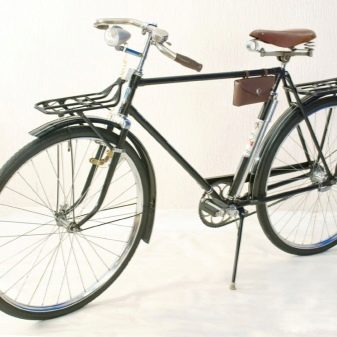
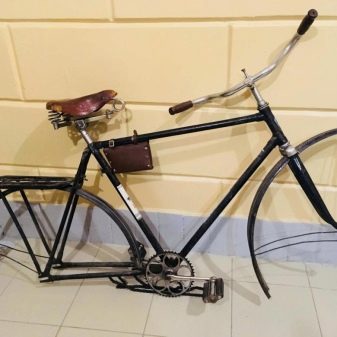
Starting from the 75th year, KhVZ began to produce models with an updated marking: 111–413, 111–411 and 111–412. New bicycles inherited all the main features of their predecessors and were distinguished by minor changes in construction and design, such as the presence of ears for attaching the chain protection, a new configuration steering wheel and a stamped logo “KhVZ”, instead of the inscription “Ukraine” or “Kharkov” on the sleeve body.
The new models were equipped with a pump, a bell, a tool bag and a first aid kit, and some models were additionally equipped with a footrest, headlight, dynamo, mileage counter, front trunk and a mirror. Since the 80th year, modifications 111–421, 111–422 and 111–423 have seen the light, having a different saddle design, more modern decor and modified dropouts. The latest Soviet HVZ model is the model with a shortened base "Ukraine" 111-431.
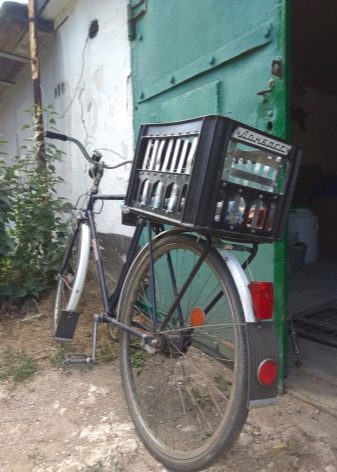
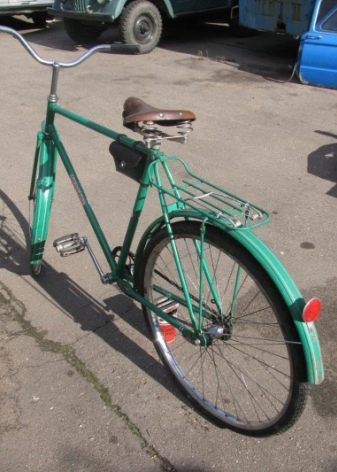
Next, see the process of restoration of the bicycle HVZ "Ukraine" V-130.










